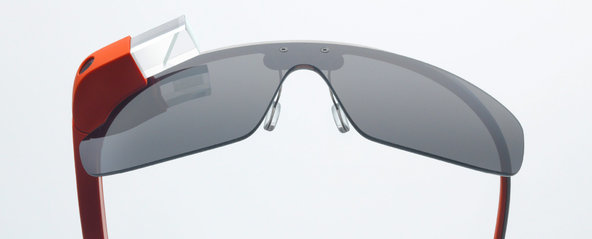 A prototype of Google Glass.
A prototype of Google Glass.
Google’s Internet-connected glasses are coming.
On Monday, Google released information for software developers who want to build apps for Glass, and on Tuesday, it sold its first pairs for $1,500 to people who had signed up at its developers conference last year.
The rules for developers reveal more about what Glass will be able to do and the steps Google is taking to make sure the glasses don’t alarm or confuse people. Google is being more restrictive about Glass than it has been with other products, in part because it wants to slowly introduce the new technology to the public to deal with concerns like privacy.
But despite those concerns, people can rest assured that Glass will be groundbreaking in at least one way — its ability to distribute photos of cats. “Each step in human technological advancement provides improved methods for the distribution of cat photos,” Google said. “Project Glass is no different.”
It described some sample apps to inspire developers — an app that delivers random cat facts every hour to the glasses, one to merge photos taken with Glass with photos of cats and another to show the nearest pet store.
To start, Google is controlling much about the apps that developers build for Glass, in stark contrast to its philosophy regarding Android, its mobile operating system, where developers have significant freedom.
For instance, to begin, developers cannot sell ads in apps, collect user data for ads, share data with ad networks or distribute apps elsewhere. They cannot charge people to buy apps or virtual goods or services within them.
Google also gave developers some guidance when thinking about how to build for Glass. First, design specifically for the glasses, not for other mobile devices, because the glasses are so different. Make sure apps do not get in the way or send updates too frequently, since people wear the glasses in front of their eyes all the time. Apps should provide timely information, Google said, and avoid doing anything unexpected.
“Surprising the user with unexpected functionality is bad on any platform, but especially on Glass given how close it is to their daily experience,” Google said. “Be honest about the intention of your application, what you will do on the user’s behalf, and get their explicit permission before you do it.”
The apps will be cloud-based, like Web apps, as opposed to living on the device like cellphone apps. Glass apps will be called Glassware, and the library that software developers use to build apps, called an application programming interface, is called Google Mirror.
People wearing Glass see a series of cards with text, images and video that they can swipe through, using their voices or fingers or by moving their heads. These cards are apps, and developers can program them so they read information aloud, use a wearer’s location or share information with other people or apps, for instance.
Google also released a few more details about the hardware. The glasses have adjustable nose pads, and even though the screen is directly in front of the wearer’s eye, it seems to be a 25-inch high-definition screen eight feet away.
The glasses connect to the Internet using Wi-Fi and Bluetooth, include photo and video functions, have 12 gigabytes of usable storage and are synced with Google’s cloud storage. The battery generally lasts a day, Google said, but will be exhausted more quickly if the user watches a lot of video.
Article source: http://bits.blogs.nytimes.com/2013/04/16/google-releases-details-about-glass-for-app-developers/?partner=rss&emc=rss